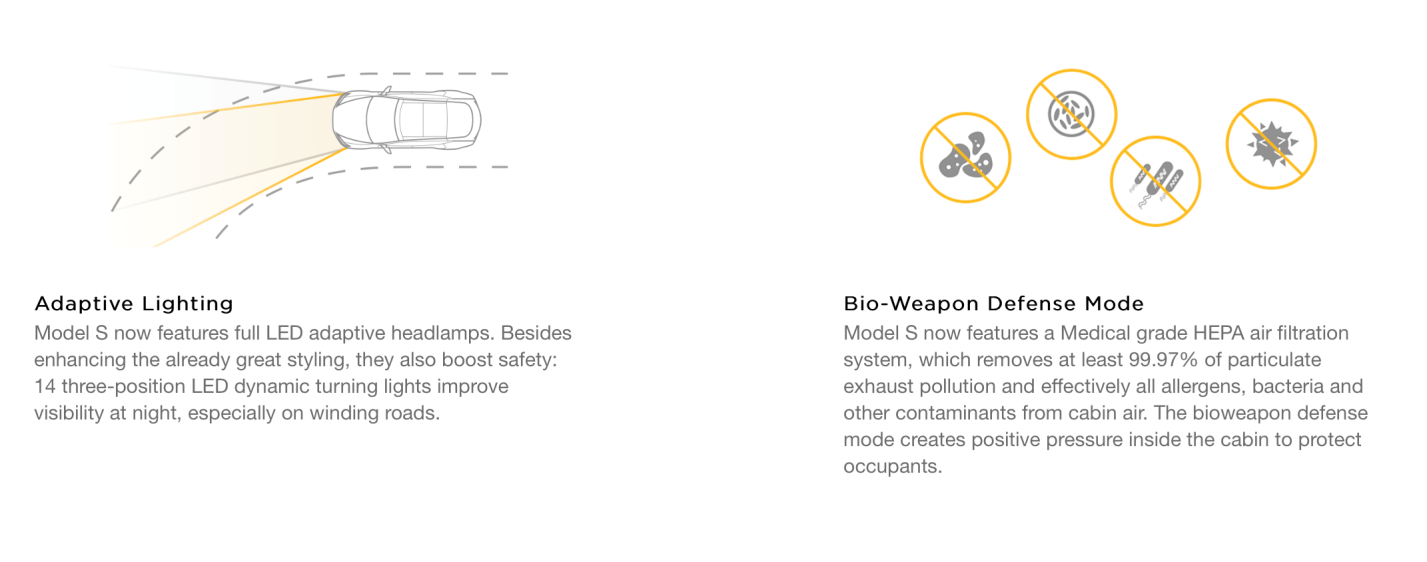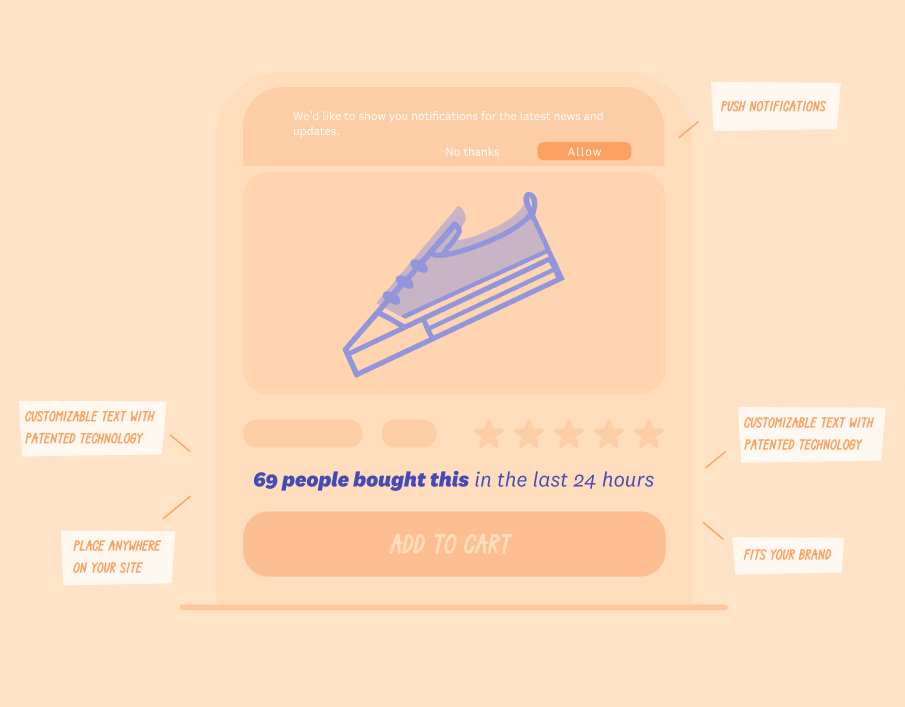Table Of Content

Tell me if this situation sounds familiar.
You’ve got amazing products that you know your target customers will love, and you’ve created a gorgeous eCommerce website to sell those products.
There’s just one problem:
Your products aren’t selling nearly as well as you thought they would.
And you’re feeling a little confused.
After all, you’ve done enough research to know that you’ve got a reasonably priced product that appeals to a specific target customer.
So, what’s going wrong here? Why aren’t your products selling like crazy?
The answer could lie in your product copy.
Seriously – if you haven’t sunk some serious time and effort into crafting product copy that converts your visitors to customers, it’s time to start.
How, you ask?
Great question.
Let’s talk about how to write product copy that makes people buy.
And when you’re done reading this post, you should be able to tweak your product copy in a way that results in more sales.
Get clear on your target audience.
Before you write a single word of product copy, you need to know exactly who you’re talking to.
So, ask yourself this question:
Who is my target customer for this product?
And your answer shouldn’t be something vague like “women” or “adults.”
You need to know specifically who you’re selling to. Ask yourself detailed questions about your target customers, like:
- What are their hobbies?
- What is their educational background and salary?
- What kind of humor do they appreciate?
- How old are they exactly?
The answers to questions like these can help you really nail your product copy.
Once you’ve gathered plenty of information about your target customer, use that information to create a buyer persona – a semi-fictional representation of your target customers.
Here’s an example of a buyer persona you might create as a pet supplies shop owner:

[source](http://shopifynation.com/marketing/create-buyer-persona-for-ecommerce/)
After you create your buyer persona, always reference it when you write your product copy. You should write as if you’re talking to that one person.
Because you don’t need your copy to appeal to everyone in the world – you just need to appeal specifically to your target customer!
Focus on benefits
How often do you see bland product descriptions that include a simple list of product features?
I bet your answer is: “Pretty often.”
It’s easy to throw a list of features together – but should you really be using that list as the only information available in a product description?
No way.
If you want to sell, you need to talk about the benefits of using your product.
Don’t get me wrong – you should include features too. But make sure you talk benefits first.
Take a look at this example from the Lush Cosmetics website:

You can see that their product description focuses on the benefits of the lip tint – restoring moisture to the lips and getting a perfectly pigmented pout.
Below that benefit-focused description, they have a “Features” tab that expands for customers who want details about the product features.
Use this same strategy when you write product descriptions – highlight the benefits and include the features somewhere less prominent.
If you’re not sure which benefits to include in your product description, ask yourself this question:
What problem does my product solve?
In the example above, the lip tint solves a specific problem: dry lips. That’s why they made a point to mention that the product restores moisture to the lips.
Let’s take a look at another example from Bath and Body Works:

You can see how they mention that the fragrance fills an entire room with the “highest concentration of fragrance oils” to eliminate any unpleasant smell.
That unpleasant smell is the problem, and the candle is the solution.
Take some time to make a list of the problems your product solves for your target customers. Once you do that, you’ll be well on your way to writing a benefit-focused product description.
Back up any bold claims.
Any business can make a claim about how wonderful their product is.
But backing up those bold claims with cold, hard facts?
That is what makes customers want to buy.
Take a look at this copy on the Tesla website:

You can see that they’re marketing the Model S as the “safest” sedan on the road.
Now, reading that might make you think:
Yeah, right. I’ve seen SO many different automobile companies claim that their sedans are the safest on the road. Why should I believe this one is better than the rest?
That’s a valid concern, and Tesla knows it.
That’s why they go on to explain specifically why their sedan is the safest. Take a look:

Pretty convincing, right?
Learn from this example – if you’re going to make a bold claim about your product (like “safest” or “most innovative”), you have to back it up with facts.
That way, your customers know that you aren’t just trying to sell them with a biased opinion about your own product.
Use formatting to your advantage.
When Nielsen Norman Group researched the way people read on the web, they found that a whopping 79% of users scanned any new page they came across. Only 16% read everything word-for-word.
What does this have to do with writing product descriptions?
It means that you need to break them up in a way that’s easy for people to scan and digest.
Here’s how Neiman Marcus does it on their website:

Not only did they use varying text colors and sizes in this product description – they included a bullet list to make the description even more readable.
So, get rid of any giant walls of text in your product descriptions. Use white space, bulleted lists, varying text sizes and colors, and/or imagery to draw the potential customer’s eyes to the most important points and keep them reading.
Appeal to the senses.
Imagine this.
It’s 6PM, and you just got home from work. You were so busy all day that you forgot to eat, so you’re craving junk food.
But you’re way too tired to cook right now, so you flip on the TV.
During the first commercial break, you see a Burger King ad that shows a close-up of their French fries.

[source](http://adage.com/article/adages/burger-king-s-hyperbolic-satisfries-tv-ad/244357/)
You feel your mouth water. And suddenly, you know what you want to eat.
A giant order of French fries from Burger King.
Why?
By showing a close up of the French fries, the commercial appealed to your senses. And that’s what made you crave the fries.
If you want your customers to crave the products in your eCommerce store, you should appeal to their senses too.
Here’s an example of how Valrhona, a chocolate brand, does it:

You can see that they’ve included a sensory word – “crunchy” – right in the product name and description.
If you use sensory words like these in your product copy, you can feel confident knowing you’ll see an increase in sales. Dr. Brian Wansink, director of the Food and Brand Lab at Cornell University, even found that descriptive labeling increased sales by as much as 27 percent.
But don’t assume that this tactic only works for eCommerce stores that sell food – that’s simply not the case.
For example, if you sell clothing, you could use sensory words related to touch, like “soft” and “velvety.” Or if you sell candles, you could use sensory words related to smell, like “minty” or “spicy.”
These sensory words help your potential customers envision what it’d be like to use your product – and that puts them one step closer to hitting the “Buy” button.
Tell a story.
Scientific research has proven that when people hold a physical product, their desire to own it increases. But as an online eCommerce store, your visitors can’t actually feel your product in their hands.
That’s why you must describe what people experience when they use your product. Take a look at this product description from Amazon:

After reading this, the product isn’t just a blanket anymore.
The reader imagines themselves ditching their old, scratchy blanket for a new blanket that’s cozy and soft.
That’s a lot more effective than simply describing the blanket, wouldn’t you say?
When we are being told a story, it’s more than the language processing parts of the brain that light up. Brain scans have found that the areas of the brain we would use to experience the actual events of the story are activated too!
So, don’t be afraid to use storytelling in your product descriptions. Start by thinking about what it’s like when the customer experiences your product.
Then, write out what the customer’s experience might be like – and be sure to include sensory words in the story if you can!
For example, if you sell women’s maxi dresses, you could tell a story about a woman walking along the beach in her soft, free-flowing maxi dress.
That way, you’d paint a picture in the potential customer’s mind of what it’d be like to actually experience wearing the dress.
Whatever you do, be sure your storytelling targets your customers’ emotions. Researchers from the Missouri University of Science and Technology say that consumers buy strictly based on their emotional response.
Show some personality.
Let’s face it. Most product copy is pretty boring.
It doesn’t really connect with the reader – it simply states the product features and benefits in a straightforward way.
And sure, it’s good to include information about your product’s benefits and features.
But what if your copy not only made a customer want to buy – it also made them feel connected to your brand in a way that kept them coming back for more?
It definitely can – you just need to inject your brand personality in your product copy.
Here’s a great example of personality-filled product copy from Firebox:

Rather than simply calling it “gin” and saying something obvious like “contains 40% alcohol” in the description, they’ve used colorful, personality-filled language to make this product irresistible to their target audience.
Want to add some personality to your product descriptions?
Make sure you consider your target audience and your overall brand when you do.
Your brand personality should be consistent throughout your marketing efforts, and that brand personality should appeal specifically to your target customers.
Answer pre-sales questions.
Answering your customers’ pre-sales questions in your product copy helps clear up any confusion about your products. On top of that, it helps your potential customers overcome any objections that are stopping them from buying.
To understand this better, imagine that you’re a customer. You’re going snowboarding on vacation soon, so you’re looking for a pair of snowboarding pants online.
You know it’s going to be chilly no matter what, but you want to buy pants that will keep you as warm as possible.
Eventually, you come across a pair of pants with this product information:

Since the copy includes specific information about how the pants include special insulation to keep the cold out, you feel confident in your purchase.
But what if the second and third bullet points weren’t there?
Chances are, you’d keep weighing your options. You wouldn’t feel as confident about your decision to buy if the copy didn’t answer this pre-sales question:
Will these pants REALLY keep me warm while I’m snowboarding?
And your customers think that way too.
So, make your they can feel confident in their decision to buy from you by answering their pre-sales questions in your product copy. Seriously – this is a critical step in writing eCommerce product copy that sells!
Final thoughts
All of these copywriting strategies can work wonders for making your customers click that big “Buy” button.
But it’s up to you to find the perfect strategy for combining them together into persuasive eCommerce product copy.
No matter what, your business should strive to never be boring. Don’t be afraid to do something unique as long as it appeals to your target audience.
Because it doesn’t really matter what your eCommerce store sells – it’s all about how you sell it.





%201.svg)
%201.svg)


